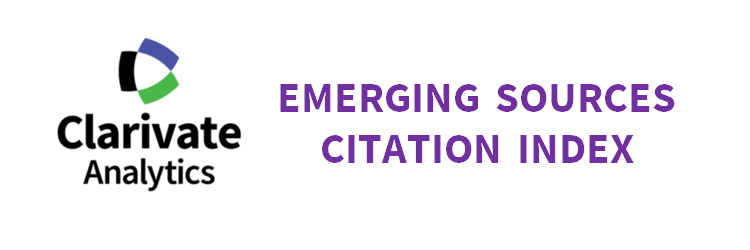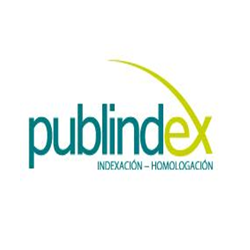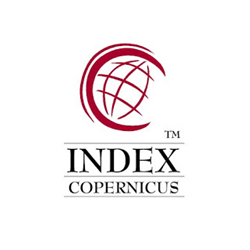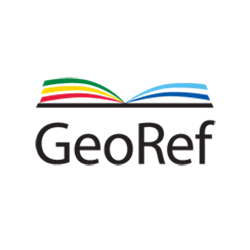Artificial Intelligence and machine learning model for spatial and temporal prediction of Drought events in the Magdalena department, Colombia.
DOI:
https://doi.org/10.17981/ingecuc.18.2.2022.20Keywords:
Drought, Standardized Precipitation Index, Satellite Imagery, Machine Learning, Random Forest, Decision Tree ClassifierAbstract
Introduction— Drought is one of the most critical hydrometeorological phenomenon in terms of its impacts on society. Although Colombia is a tropical country, there are areas of the territory which have periods of drought, and this causes significant economic damage.
Objective— Due to recent advances in terms of the spatial and temporal resolutions of remote sensing, and artificial intelligence techniques, it is possible to develop automatic learning models supported by historical information.
Methodology— In this study, a Random Forest (RF) and Bagged Decision Tree Classifier (DTC) model was built to perform spatial and temporal drought prediction in the department of Magdalena using the following features: Normalized Difference Vegetation Index (NDVI), land surface temperature (LST), precipitation, Normalized Difference Water Index (NDWI), Normalized Multiband Drought Index (NMDI), evapotranspiration (ET), surface soil moisture (SSM), subsurface soil moisture (SUSM), Multivariate ENSO Index (MEI), Southern Oscillation Index (SOI), and Oceanic Niño Index (ONI).
Results— For labelling, which allows one to train and evaluate the model, the Standardized Precipitation Index (SPI) was used to identify drought events.
Conclusions— The implementation of the developed model can allow governmental entities to take actions to mitigate impacts generated by recurring droughts in their territories.
Downloads
References
D. Wilhite, M. Sivakumar & D. Wood, Early warning systems for drought preparedness and drought management. GEN, CH: WMO, 2000. Available from http://www.wamis.org/agm/pubs/agm2/agm02.pdf
T. McKee, N. Doesken & J. Kleistet, “The relationship of drought frequency and duration to time scales,” presented at 8th Conference on Applied Climatology, ANA, CA, USA, 17-22 Jan. 1993. Available from https://www.droughtmanagement.info/literature/AMS_Relationship_Drought_Frequency_Duration_Time_Scales_1993.pdf
WMO, “Índice normalizado de precipitación Guía de usuario”, GEN, CH: WMO, Report No. 1090, 2012. Available: https://library.wmo.int/doc_num.php?explnum_id=7769
FAO, Sequía: FAO in Emergencies. [Online] Disponible en http://www.fao.org/emergencies/tipos-de-peligros-y-de-emergencias/sequia/es/ [Fecha de consulta 31 Ene. 2020].
W. Cramer, G. Yohe, M. Auffhammer, C. Huggel, U. Molau, M. Dias, A. Solow, D. Stone, & L. Tibig, “Detection and attribution of observed impacts”, in Climate Change 2014: Impacts, Adaptation,and Vulnerability. Part A: Global and Sectoral Aspects. Contribution of Working Group II to the FifthAssessment Report of the Intergovernmental Panel on Climate Change, C. Field, V. Barros, D. Dokken, K. Mach, M. Mastrandrea, T. Bilir, M. Chatterjee, K. Ebi, Y. Estrada, R. Genova, B. Girma, E. Kissel, A. Levy, S. MacCracken, P. Mastrandrea & L. White, eds, CAMB, UK/NYC, NY, USA: Cambridge UP, 2014, pp. 979-1037. https://doi.org/10.1017/CBO9781107415379.023
S. Solomon, D. Qin, M. Manning, Z. Chen, M. Marquis, K. Averyt, M. Tig-nor & H. Miller, “Climate change 2007: the physical science basis,” Cambridge UP, CAMB, UK/NY, USA, Report, 2007. Available: https://www.ipcc.ch/report/ar4/wg1/
A. Dai, T. Zhao & J. Chen, “Climate change and drought: A precipitation and evaporation perspective,” Curr Clim Change Rep, vol. 4, no. 9, pp. 301–312, May. 2018. https://doi.org/10.1007/s40641-018-0101-6
S. Mukherjee, A. Mishra & K. Trenberth, “Climate change and drought: a perspective on drought indices,” Curr Clim Change Rep, vol. 4, no. 2, pp. 145–163, Jun. 2018. https://doi.org/10.1007/s40641-018-0098-x
Revista SEMANA, “Las graves secuelas económicas de la sequía”, Semana, 23 Jul. 2014. [Online]. Disponible en https://www.semana.com/nacion/articulo/las-graves-secuelas-economicas-de-la-sequia/396750-3
Redacción El Heraldo, “Magdalena, el más azotado por la temporada de sequía”, El Heraldo, 27 Sep. 2015. [Online]. Disponible en https://www.elheraldo.co/magdalena/magdalena-el-mas-azotado-por-la-temporada-de-sequia-219590
O. Rahmati, F. Falah, K. Dayal, R. Deo, F. Mohammadi, T. Biggs, D. Moghaddam, S. Naghibi & D. Bui, “Machine learning approaches for spatial modeling of agricultural droughts in the south-east region of Queensland Australia,” Sci Total Environ, vol. 699, pp. 1–10, Jan. 2020. https://doi.org/10.1016/j.scitotenv.2019.134230
S. Park, J. Im, E. Jang & J. Rhee, “Drought assessment and monitoring through blending of multi-sensor indices using machine learning approaches for different climate regions,” Agric For Meteorol, vol. 216, pp. 157–169, Jan. 2016. https://doi.org/10.1016/j.agrformet.2015.10.011
K. Fung, Y. Huang, C. Koo & M. Mirzaei, “Improved SVR machine learning models for agricultural drought prediction at downstream of Langat River Basin, Malaysia,” J Water Clim Chang, vol. 11, no. 4, pp. 1383–1398, Jun. 2019. https://doi.org/10.2166/wcc.2019.295
P. Feng, B. Wang, D. Li Liu & Q. Yu, “Machine learning-based integration of remotely-sensed drought factors can improve the estimation of agricultural drought in south-eastern Australia,” Agric. Syst, vol. 173, pp. 303–316, Aug. 2015. https://doi.org/10.1016/j.agsy.2019.03.015
A. Belayneh, J. Adamowski, B. Khalil & J. Quilty, “Coupling machine learning methods with wavelet transforms and the bootstrap and boosting ensemble approaches for drought prediction,” Atmos Res, vol. 172-173, pp. 37–47, Jun. 2016. https://doi.org/10.1016/j.atmosres.2015.12.017
X. Liu, X. Zhu, Q. Zhang, T. Yang, Y. Pan & P. Sun, “A remote sensing and artificial neural network-based integrated agricultural drought index: Index development and applications,” Catena, vol. 186, no. 2, pp. 1–10, Mar. 2020. https://doi.org/10.1016/j.catena.2019.104394
J. Cruz & D. Wishart, “Applications of machine learning in cancer prediction and prognosis,” Cancer Inform, vol. 2, pp. 59–77, Dec. 2006. https://doi.org/10.1177/11769351060020003
L. Deng & X. Li, “Machine learning paradigms for speech recognition: An overview,” IEEE Trans Audio Speech Lang Process, vol. 21, no. 5, pp. 1060–1089, May. 2013. https://doi.org/10.1109/TASL.2013.2244083
K. Rasouli, W. Hsieh & A. Cannon, “Daily streamflow forecasting by machine learning methods with weather and climate inputs,” J. Hydrol., vol. 414-415, pp. 284–293, Jan. 2012. https://doi.org/10.1016/j.jhydrol.2011.10.039
D. Lary, A. Alavi, A. Gandomi & A. Walker, “Machine learning in geosciences and remote sensing,” GSF, vol.7, no. 1, pp. 3–10, Apr. 2015. https://doi.org/10.1016/j.gsf.2015.07.003
Minambiente, UNGRD, IDEAM, Estrategia Nacional para la gestión integral de la sequía en Colombia. BO, CO: MinAmbiente, IDEAM, & UNGRD, 2018. Recuperado de https://www.unccd.int/sites/default/files/country_profile_documents/ENGIS%2520para%2520publicaci%25C3%25B3n_Colombia.pdf
UNGRD, “Consolidado anual de emergencias”, (1998-2021), Gobierno de Colombia [Online]. Disponible en http://portal.gestiondelriesgo.gov.co/Paginas/Consolidado-Atencion-de-Emergencias.aspx (consultado 2020, May. 18).
Gobernación del Magdalena, “Nuestro departamento”, Gobierno de Colombia [Online]. Disponible en http://www.magdalena.gov.co/departamento/nuestro-departamento (consultado 2020, May. 18)
DANE, Resultados Censo Nacional de Población y Vivienda 2018. BO, CO: Gobierno de Colombia. Recuperado de https://www.dane.gov.co/files/censo2018/informacion-tecnica/presentaciones-territorio/191004-CNPV-presentacion-Magdalena.pdf
IDEAM, Magdalena. BO, CO: Gobierno de Colombia. Recuperado de http://atlas.ideam.gov.co/basefiles/magdalena_texto.pdf
K. Trenberth, A. Dai, G. Van Der Schrier, P. Jones, J. Barichivich, K. Briffa & J. Sheffield, “Global warming and changes in drought,” Nat Clim Change, vol. 4, no. 1, pp. 17–22, Dec. 2013. https://doi.org/10.1038/nclimate2067
N. Gorelick, M. Hancher, M. Dixon, S. Ilyushchenko, D. Thau & R. Moore, “Google Earth Engine: Planetary-scale geospatial analysis for everyone,” Remote Sens Environ, vol. 202, pp. 18–27, Jul. 2016. https://doi.org/10.1016/j.rse.2017.06.031
NASA. Normalized Difference Vegetation Index (NDVI), 30 Aug. 2000. Available: https://earthobservatory.nasa.gov/features/MeasuringVegetation/measuring_vegetation_2.php
T. Du, D. Bui, M. Nguyen & H. Lee, “Satellite-based, multi-indices for evaluation of agricultural droughts in a highly dynamic tropical catchment, central Vietnam,” J Water, vol. 10, no. 5, pp. 1–24, Jan. 2018. https://doi.org/10.3390/w10050659
L. Wang & J. Qu, “NMDI: A normalized multi-band drought index for monitoring soil and vegetation moisture with satellite remote sensing,” Geophys Res Lett, vol. 34, no. 20, pp. 1–5, Jul. 2007. https://doi.org/10.1029/2007GL031021
G. Poveda y O. Mesa, “Las fases extremas del fenómeno ENSO (El Niño y La Niña) y su influencia sobre la hidrología de Colombia”, Ing Hidraulic Mex, vol. 11, no. 1, pp. 21–37, Ene. 1996. Disponible en http://www.revistatyca.org.mx/ojs/index.php/tyca/article/view/765
D. Edwards & T. McKee, “Characteristics of 20th century drought in the United States at multiple time scales,” Dept. Atmos. Sci., CSU, FRT COLL., CO, USA, Climatology Report No. 97-2, Paper no. 634, 1997. Available: http://hdl.handle.net/10217/170176
O. Valiente, “Sequía: definiciones, tipologías y métodos de cuantificación”, Invest Geogr, no. 26, pp. 59–80, Mar. 2001. https://doi.org/10.14198/INGEO2001.26.06
R. Mayorga y G. Hurtado, “La sequía en Colombia, Documento tecnico de respaldo a la informacion en la pagina web del IDEAM”, IDEAM, BO, CO, Report IDEAM–METEO/004-2006, 2006. Recuperado de http://www.cambioclimatico.gov.co/documents/21021/21147/NotaT%C3%A9cnicaSequia.pdf/d9ba4965-f7cd-4a2f-a875-2a38b1d6a941
G. Hurtado, Sequía meteorológica y sequía agrícola en Colombia: Incidencia y tendencias. BO, CO: IDEAM, 2012. Disponible en http://www.ideam.gov.co/documents/21021/21138/Sequias+Incidencias+y+Tendencias.pdf/3e72c86c-cf4a-42f9-95f1-07e7cf88861a
J. Gómez y M. Cadena, “Actualización de las estadísticas de la sequía en Colombia”, IDEAM, BO, CO, Nota técnica IDEAM-METEO/001-2018, Jun. 2017. Recupearado de http://www.ideam.gov.co/documents/21021/124446218/NT+001-2018_Actualizaci%C3%B3n+de+las+estad%C3%ADsticas+de+la+sequia+en+Colombia/d47113b3-536b-4c83-a69c-22f97993016f?version=1.1
NDMC, “Climographs,” SNR [Online]. Available: https://drought.unl.edu/Climographs.aspx (consultado: 2018, dec. 7).
W. Koehrsen, “A feature selection tool for machine learning in Python, Towards Data Science,” 22 Jun. 2018. Available: https://towardsdatascience.com/a-feature-selection-tool-for-machine-learning-in-python-b64dd23710f0
C. Sutton, “11 - Classification and regression trees, bagging, and boosting,” Handb Stat, vol. 24, pp. 303–329, Dec. 2005. https://doi.org/10.1016/S0169-7161(04)24011-1
E. Bauer & R. Kohavi, “An empirical comparison of voting classification algorithms: Bagging, boosting, and variants,” Mach Learn, vol. 36, no. 1-2, pp. 1–38, Jan. 1996. Available: http://robotics.stanford.edu/~ronnyk/vote.pdf
S. Safavian & D. Landgrebe, “A survey of decision tree classifier methodology,” IEEE Trans Syst Man Cybern, vol. 21, no. 3, pp. 660–674, Jun. 1991. https://doi.org/10.1109/21.97458
M. Pal, “Random forest classifier for remote sensing classification,” Int J Remote Sens, vol. 26, no. 1, pp. 217–222, Oct. 2003. https://doi.org/10.1080/01431160412331269698
F. Pedregosa, G. Varoquaux, A. Gramfort, V. Michel, B. Thirion, O. Grisel, M. Blondel, P. Prettenhofer, R. Weiss, V. Dubourg, J. Vanderplas, A. Passos, D. Cournapeau, M. Brucher, M. Perrot & É. Duchesnay, “Scikit-learn: Machine learning in Python”, J Mach Learn Res, vol. 12, no. 85, pp. 2825–2830, Mar. 2011. Available: https://www.jmlr.org/papers/v12/pedregosa11a.html
Scikit-Learn, Scikit-Learn Machine Learning in Python [Online]. Available: https://scikit-learn.org/stable/index.html (consultado: 2020, May. 18).
W Fin de Semana, “Declaran calamidad pública por sequía en cinco municipios del Magdalena”, W Radio, 27 Jul. 2014. Disponible en https://www.wradio.com.co/noticias/actualidad/declaran-calamidad-publica-por-sequia-en-cinco-municipios-del-magdalena/20140727/nota/2341212.aspx
M. Correa, “La sequía impacta a 7 departamentos”, El Colombiano, 22 Jul. 2014. Disponible en https://www.elcolombiano.com/historico/la_sequia_impacta_a_7_departamentos-IGEC_303649

Downloads
Published
How to Cite
Issue
Section
License
Copyright (c) 2022 INGE CUC

This work is licensed under a Creative Commons Attribution-NonCommercial-NoDerivatives 4.0 International License.
Published papers are the exclusive responsibility of their authors and do not necessary reflect the opinions of the editorial committee.
INGE CUC Journal respects the moral rights of its authors, whom must cede the editorial committee the patrimonial rights of the published material. In turn, the authors inform that the current work is unpublished and has not been previously published.
All articles are licensed under a Creative Commons Attribution-NonCommercial-NoDerivatives 4.0 International License.


 English
English
 Español (España)
Español (España)






















